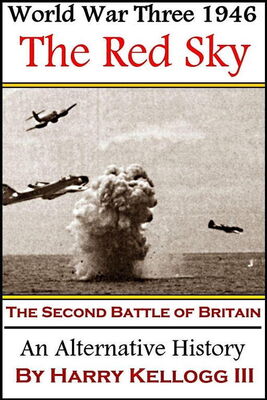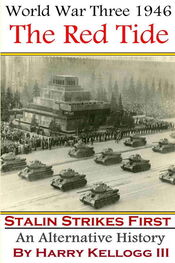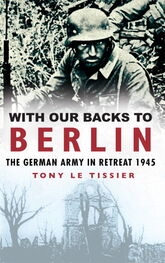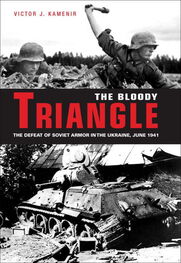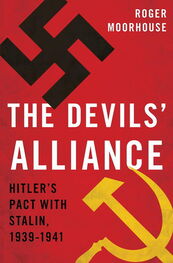Inside it was a completely different atmosphere, palpably different. General Nathan A. Twining was standing toe to toe with General Curtis LeMay and neither was backing down. Twining was named the 15th Air Force commander once again and was overseeing a buildup of bombers that would equal the force he commanded in World War Two.
The 15th always got short shrift to the 8th and always had a chip on its shoulder and now SAC was trying to knock that chip off. Here we have two Generals about to embark on a massive bombing campaign only rivaled by the last months of the last war and they were acting like a couple of feuding chimpanzees. If anyone is unsure of evolution all you had to do to convince them was to have them watch these two generals and their childish pissing match to see the similarity to animals in the wild. From the baring of teeth the exaggerated poses to the guttural sounds sometimes emanating from their guts neither was giving an inch as both believed down to their last breath that they were the only thing standing between the American public and Stalin himself.
For LeMay it was the last gasp of a dying cause. SAC was losing. It was losing 9-10% of its bomber force every raid. The feeling of doom among the bomber crews was palpable. The inevitability of death permeated the squadrons. The combination of ground to air missiles, air to air missiles, proximity fused 90mm flak rounds and 20mm cannon shells from fighter planes was proving too much for even the best. The math was inescapable and the logic of the situation too stark.
The damage on the ground mirrored closely the raids on many of the large fuel productions facilities of the Germans and the losses to the bomber forces mirrored the Schweinfurt raids.
The losses in bombers of the Schweinfurt raids had caused a three month pause in the bombing campaign against the Third Reich and now those same statistics were about to defeat SAC and LeMay. Even if you could replace the Super Fortresses that were shot down the odds were clear to the bomber crews. Most could not survive 25 missions. The odds were that you would be shot down within the first 10 missions. The math was once again inescapable.
At the height of its war time production America was producing less than 60 of the most complicated machine ever conceived. 60 B-29 Superfortresses a month represented the apex of American manufacturing when at full capacity. Eventually that could be achieved again. But not in time to save SAC who was losing over 30 a raid at this point despite gaining access to every Superfortress in the US arsenal. SAC was down to 402 effective bombers.
LeMay needed the bombers of the 15th Air Force. He needed the venerable B17s and B-24s that gutted the soft underbelly of Hitler’s war machine. He needed General Twinning and his bomber crews. The Joint Chiefs had predicted this outcome. They had a plan B for just this contingency and plan B needed to sacrifice SAC in order to succeed. Stalin had to be goaded into overreaching. He needed to be drawn further and further away from his source of supply. He needed to be taunted into doing something stupid and that meant sacrificing SAC and some of the 15th Air Force as well.
LeMay knew that if he failed at plan A that he was expected to carry out Plan B. Plan B made SAC a diversion. It made the whole concept of the manned strategic bomber a diversion. If the time came, he was to be ordered to sell Plan B to Novikov, the VVS, to the STAVKA and to Stalin himself. Instead of the major reason for defeating an enemy he was to become a diversion a ruse or a lure.
It was becoming more apparent that Zhukov was within weeks of invading Turkey. His goal was to expand the borders of the Soviet Empire and to eliminate the bases that the bombers and more importantly their shorter ranged fighter escorts were using to attack the motherland. His mandate was to close off the Mediterranean Sea as an invasion route and to also prevent its shores from being used as possible air bases.
He had the forces to accomplish these goals but did he have enough fuel? The distance needed to be covered was about the same as from Moscow to Berlin. The resistance was expected to be much less than what was encountered in Poland and Germany. In the minds of the STAVKA it was well worth the risk and that was exactly what the leaders of NATO were counting on.
LeMay would have none of this plan. He wanted to integrate and use up the 15th while he continued to do the heavy lifting on the oil production plants. He was gaining a good 3% reduction with every raid, including the repairs the Soviets had been able accomplish between raids. So far 12 raids had been launched in 3 weeks. The fuel production facilities across the southern USSR and Ploesti were down an accumulated, additional 10% from where they were. The trouble with percentages is that it takes a long time to reach zero. What the JCS were looking at was actual capacity and each raid was accomplishing less and less reduction in capacity. It was the law of diminishing returns. It was true that less and less bombers were being lost per raid but less and less damage was being dealt as well.
Despite replacements of 120 bombers LeMay was down to 402 effective machines and crews from his high of 647. The fighters had held their own at a steady 700. By all accounts the VVS should have been down to zero fighters by now, according to the air crew’s reported kills. Yet they still were able to put up a stiff resistance to every raid and to defend their airfields from the attempts of the USAAF’s P-80s to attack them.
The Red Air Force seemed to be able to replace both its pilots and planes unlike the Germans and Japanese. The training program of the VVS was modeled on the one used by the RAF and USAAF and their factories were on full war footing. The missiles required minimal training to setup and launch and were cost effective compared to a B-29 bomber even at a rate of ten destroyed for every one bomber shot down. The X4 air to air missiles also had a hit rate of 10% and were even more cost effective is the firing aircraft escaped the wrath of the Shooting Stars. In this battle the Soviets were free to concentrate on primarily fighters and by using a combination of the very inexpensive Stalin’s Dart (He 162) as primary interceptors and the older La 7, Yak 3 and 9s to bring down the cripples the VVS was shooting down 30 bombers per raid at an estimated cost of 100 missiles and 30 of their own planes, planes that cost 10% of one B- 29.
The older B-17s and B-24s would probably fare the same as the B-29 in the short run. They would be escorted by the P-51 in huge numbers but would be more vulnerable to the late war Soviet fighters and should fare the same as the Superfortresses against the missile onslaught. A similar 10% loss per raid would also cripple the 15th Air Force in a 3 month window as well but by then it was hoped that the ruse had worked and the bait had been taken.
Only LeMay and Twinning knew of the possible ultimate fate of their respective forces. Only they knew that their brave men were possibly being used as a decoy to draw old Joe out of his homeland and into the far more vulnerable areas he would have to traverse in order to reach the airbases in both Turkey and Egypt. This of course was also a major contribution to each man’s posturing on this fine morning.
The results were inevitable for LeMay. He would eventually have to acquiesce to the orders of the Joint Chiefs and in particular General Doolittle who had formulated this planned movement of the reconstituted 15th in the first place. The 8th would still run its operations in France and Spain and eventually from Britain once again. The re-commissioned B-17s and 24s would be divided up and parceled out to each. The hidden agenda was what was bothering all. Most but LeMay knew that the era of the manned bomber dropping conventional bombs on the enemy’s cities was over once the guided missile became a reality. Yes you could sneak in a fast bomber, or bombers using a variety of methods, but large formations of heavy bombers fighting their way towards helpless cities and towns were quickly being regulated to the history books.
Читать дальше